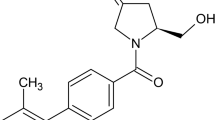Abstract
Objective
Determine whether gestational age of 17-hydroxyprogesterone caproate (17-OHPC) initiation is associated with preterm birth (PTB) risk.
Study design
We performed a retrospective cohort study using MarketScan® data. The primary outcome was PTB < 37 weeks. Rates of PTB were compared between medication initiation at 16–21 weeks versus 21–29 weeks. The association between compliance with weekly 17-OHPC injections and preterm birth rate was tested after adjusting for potential confounding variables.
Result
In all 3374 pregnancies met inclusion criteria. Women with an early 17-OHPC start were less likely to deliver preterm than those with a late start (aRR 0.88; 95%CI 0.79–0.97; p = 0.02). Less compliant patients receiving <25% of recommended doses had a higher PTB rate than those receiving >85% of recommended doses (aRR 1.5; 95%CI 1.2–1.7; p < 0.01).
Conclusion
There is an association between both early 17-OHPC initiation and compliance with reduced rates of PTB.
This is a preview of subscription content, access via your institution
Access options
Subscribe to this journal
Receive 12 print issues and online access
$259.00 per year
only $21.58 per issue
Buy this article
- Purchase on Springer Link
- Instant access to full article PDF
Prices may be subject to local taxes which are calculated during checkout

Similar content being viewed by others
References
Schoen CN, Tabbah S, Iams JD, Caughey AB, Berghella V. Why the United States preterm birth rate is declining. Am J Obstet Gynecol. 2015;213:175–80. http://www.ncbi.nlm.nih.gov/pubmed/25511243.
Meis PJ, Klebanoff M, Thom E, Dombrowski MP, Sibai B, Moawad AH. et al. Prevention of recurrent preterm delivery by 17 alpha-hydroxyprogesterone caproate. N Engl J Med. 2003;348:2379–85. https://doi.org/10.1056/NEJMoa035140.
Practice Bulletin No. 130. Obstet Gynecol. 2012 Oct;120:964–73. http://insights.ovid.com/crossref?an=00006250-201210000-00042.
Bommarito KM, Gross GA, Willers DM, Fraser VJ, Olsen MA. The effect of clinical chorioamnionitis on cesarean delivery in the United States. Health Serv Res. 2016;51:1879–95. http://www.ncbi.nlm.nih.gov/pubmed/26841089.
Wallace A, Lee B, Selvam N, Tabb L, Yudell M, Turchi R. et al. Estimation of gestational age at birth using claims-based algorithms in a commercially insured US population. Pharmacoepidemiol Drug Saf. 2016;25:3–679. https://doi.org/10.1002/pds.4070. Abstract 512.
How HY, Barton JR, Istwan NB, Rhea DJ, Stanziano GJ. Prophylaxis with 17 alpha-hydroxyprogesterone caproate for prevention of recurrent preterm delivery: does gestational age at initiation of treatment matter? Am J Obstet Gynecol. 2007;197:260.e1–260.e4. https://www.sciencedirect.com/science/article/pii/S0002937807008800?via%3Dihub.
Nelson DB, McIntire DD, McDonald J, Gard J, Turrichi P, Leveno KJ. 17-alpha hydroxyprogesterone caproate did not reduce the rate of recurrent preterm birth in a prospective cohort study. Am J Obstet Gynecol. 2017;216:600.e1–600.e9. https://www.sciencedirect.com/science/article/pii/S0002937817302946?via%3Dihub.
Markham KB, Walker H, Lynch CD, Iams JD. Preterm birth rates in a prematurity prevention clinic after adoption of progestin prophylaxis. Obstet Gynecol. 2014;123:34–9. http://content.wkhealth.com/linkback/openurl?sid=WKPTLP:landingpage&an=00006250-201401000-00007.
Heyborne KD, Allshouse AA, Carey JC. Does 17-alpha hydroxyprogesterone caproate prevent recurrent preterm birth in obese women? Am J Obstet Gynecol. 2015;213:844.e1–844.e6. https://www.sciencedirect.com/science/article/pii/S0002937815008650?via%3Dihub.
Meis PJ, Klebanoff M, Dombrowski MP, Sibai BM, Leindecker S, Moawad AH, et al. Does progesterone treatment influence risk factors for recurrent preterm delivery? Obstet Gynecol. 2005;106:557–61. http://content.wkhealth.com/linkback/openurl?sid=WKPTLP:landingpage&an=00006250-200509000-00018.
Yemini M, Borenstein R, Dreazen E, Apelman Z, Mogilner BM, Kessler I, et al. Prevention of premature labor by 17α-hydroxyprogesterone caproate. Am J Obstet Gynecol. 1985;151:574–7. https://www.sciencedirect.com/science/article/pii/0002937885901413?via%3Dihub.
Nallamothu BK, Hayward RA, Bates ER. Beyond the randomized clinical trial. Circulation . 2008;118:1294–303. https://doi.org/10.1161/CIRCULATIONAHA.107.703579.
Nickel KB, Wallace AE, Warren DK, Ball KE, Mines D, Fraser VJ, et al. Modification of claims-based measures improves identification of comorbidities in non-elderly women undergoing mastectomy for breast cancer: a retrospective cohort study. BMC Health Serv Res. 2016;16:388. http://bmchealthservres.biomedcentral.com/articles/10.1186/s12913-016-1636-7.
Acknowledgements
EBC is supported by a Robert Wood Johnson Grant #74250. The contents of this publication are solely the responsibility of the authors and do not necessarily represent the official view of the Robert Wood Johnson Foundation. MJS has research support from The March of Dimes, Washington University in St. Louis Prematurity Research Center and AMAG pharmaceuticals. The Center for Administrative Data Research is supported in part by the Washington University Institute of Clinical and Translational Sciences grant UL1 TR002345 from the National Center for Advancing Translational Sciences (NCATS) of the National Institutes of Health (NIH) and Grant Number R24 HS19455 through the Agency for Healthcare Research and Quality (AHRQ).
Author information
Authors and Affiliations
Contributions
EBC conceived and designed the work that led to the submission, played an important role in interpreting the results, drafted and revised the manuscript, and approved the final version. She has had full access to the data in the study and final responsibility for the decision to submit for publication. AGC played an important role in interpreting the results, revised the manuscript, and approved the final version. MAO helped to design the work that led to the submission, acquired data, revised the manuscript, and approved the final version. GAM played an important role in interpreting the results, revised the manuscript, and approved the final version. MGT played an important role in interpreting the results, revised the manuscript, and approved the final version. MJS conceived and designed the work that led to the submission, played an important role in interpreting the results, revised the manuscript, and approved the final version. She has had full access to the data in the study and final responsibility for the decision to submit for publication
Corresponding author
Ethics declarations
Conflict of interest
MJS has research support from AMAG pharmaceuticals. AMAG pharmaceuticals had no role in the planning, execution, analysis, or interpretation of these results. The other authors declare that they have no conflict of interest.
Additional information
Publisher’s note: Springer Nature remains neutral with regard to jurisdictional claims in published maps and institutional affiliations.
Supplementary information
Rights and permissions
About this article
Cite this article
Carter, E.B., Cahill, A.G., Olsen, M.A. et al. Practical considerations with 17-Hydroxyprogesterone caproate for preterm birth prevention: does timing of initiation and compliance matter?. J Perinatol 39, 1182–1189 (2019). https://doi.org/10.1038/s41372-019-0401-2
Received:
Revised:
Accepted:
Published:
Issue Date:
DOI: https://doi.org/10.1038/s41372-019-0401-2



